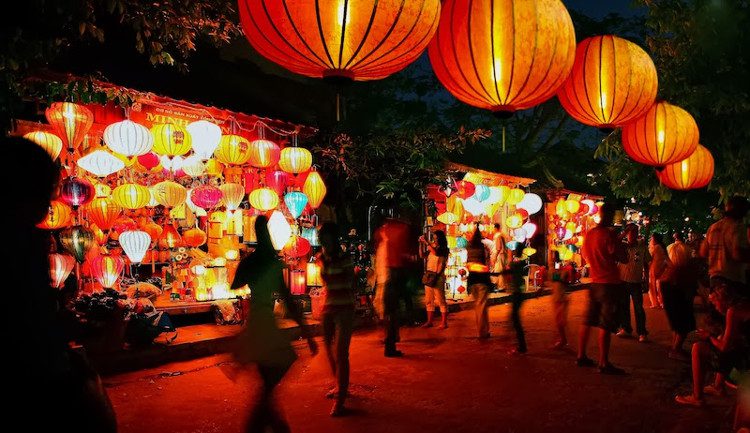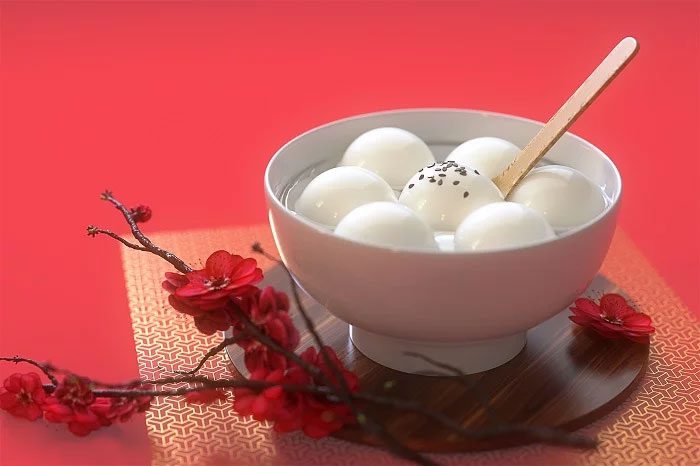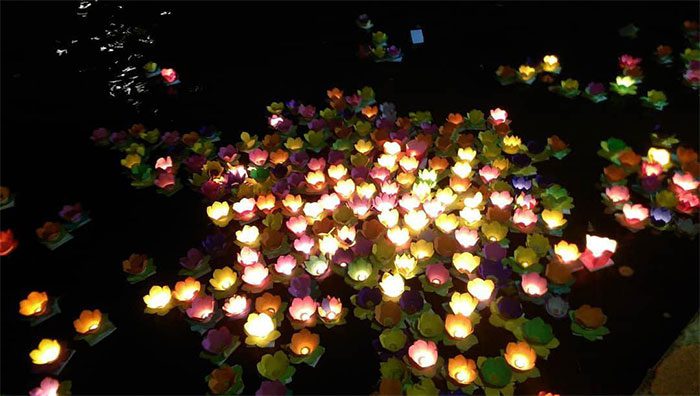The Full Moon of January (15th day of the first lunar month) is also known as the Yuanxiao Festival or the Shangyuan Festival. This is the first full moon of the lunar new year according to the Vietnamese calendar, marking an appropriate time to pray for peace and safety throughout the year.
This day is one of great significance in the lunar calendar for Asian people. Some even believe that “Worshiping throughout the year cannot compare to the Full Moon of January.” In China, this day is celebrated with the Lantern Festival to officially conclude the Lunar New Year festivities.
What You Need to Know About the Full Moon of January
What is the Yuanxiao Festival?
The first legend tells that: “Once upon a time, a swan flew down from the heavenly realm and was shot down by a hunter.
To avenge the swan, the Jade Emperor sent an army from Heaven on the 15th of the first lunar month to incinerate all humans and animals in the mortal world.
Fortunately for humanity, some deities in Heaven disagreed with the Jade Emperor’s harsh decision. They risked their lives to descend to the mortal realm to offer advice. Thus, on that day, families hung lanterns and set off fireworks to make Heaven think their homes were ablaze. Thanks to that, humanity escaped extinction.”

In many places, the Lantern Festival is also referred to as the Yuanxiao Festival.
The second legend tells that: “During the reign of Emperor Wu of Han, a young girl named Yuanxiao, who lived in the palace, was forbidden to visit her parents on the 15th of the first lunar month, and she contemplated jumping into a well to end her life. Moved by her filial piety, a court official named Dongfang Shuo devised a plan to help her. He reported to Emperor Wu of Han that on the 16th of the first lunar month, Heaven would send the Fire God to burn the capital.
To avoid this disaster, everyone had to hang lanterns at their doors and on the streets on the 15th. Following the emperor’s orders, on that day, all households hung lanterns, and while people were busy admiring the beautiful lanterns, the young girl managed to sneak home to visit her parents without anyone noticing.”
However, both stories are merely legends. According to Chinese scholars, the Lantern Festival originated from the tradition of using fire to commemorate the festival and ward off bad luck among the people of this country.
Since the introduction of Buddhism to China during the Han dynasty, the Lantern Festival has taken on various religious significances. Buddhists use this day to remember the Buddha, while Taoists celebrate the birthday of the Fire God.
Not only lanterns, but people also make Yuanxiao dumplings (similar to Vietnamese bánh trôi). Therefore, in many places, the Lantern Festival is also called the Yuanxiao Festival.
Regardless of its name, it is considered a very important festival for the Chinese, marking a significant part of the Lunar New Year celebrations. It is the official festival that concludes the Lunar New Year celebrations for the local people.
The Yuanxiao Festival falls on the 15th day of the first lunar month, so it usually takes place about a week after the Lunar New Year holidays in Vietnam.
In 2024, the Yuanxiao Festival will be on Saturday, February 24, 2024.
Significance of the Yuanxiao Festival
The Yuanxiao Festival begins at midnight on the 14th (the night before the full moon) and lasts until midnight on the 15th of the first lunar month.
Originating from the story of the palace maid named Yuanxiao mentioned above, the Yuanxiao Festival symbolizes family reunion and togetherness.

The bánh trôi is commonly seen during the Yuanxiao Festival.
On this day, family members often gather together to cook, chat, enjoy tea, eat Yuanxiao dumplings, and admire the moon.
The Yuanxiao Festival means the first full moon night of the new year. In this case, “Yuan” means first, and “xiao” means night. Additionally, the Vietnamese also refer to this day as Shangyuan Festival to distinguish it from the Zhongyuan Festival (the full moon of July) and the Xiayuan Festival (the full moon of October).
This is an important holiday for Buddhists. This significance is underscored by the two sayings: “Worshiping all year cannot compare to the Full Moon of January” and “Worshiping the Buddha all year cannot compare to the Full Moon of January.”
On this day, each family usually prepares a ceremonial offering to express their respect and gratitude towards their ancestors as well as the Buddha. They also pray for peace, luck, and prosperity in the new year.
Depending on the family, the offerings on the Yuanxiao Festival can vary in quantity. While each family may prepare different offerings, the purpose remains to show respect to their ancestors and the Buddha.
Moreover, the Full Moon of January is also referred to as “Late New Year Festival” because it occurs immediately after the Lunar New Year, providing an opportunity for families who may have relatives who were ill or absent during the Lunar New Year to reunite.
Things to Do During the Yuanxiao Festival
Notes for worshiping and lighting incense on the Full Moon of January:
Important Notes for Worshiping on the Full Moon of January
When lighting incense, people often light an odd number of sticks, as odd numbers symbolize the spiritual realm. Therefore, you can light 1, 3, 5, 7, or 9 sticks of incense in each incense bowl.
When lighting incense, it is important to dress appropriately, avoiding shorts, short-sleeved shirts, or sloppy clothing…
When praying, you should do so smoothly and sincerely to demonstrate respect towards the deities and ancestors.
Meaning of the Number of Incense Sticks Lit
The significance of lighting incense sticks according to popular belief is as follows:
- Lighting 1 stick: symbolizes peace.
- Lighting 3 sticks: can summon news, protect those in the house, and ward off misfortune.
- Lighting 5 sticks: is a way for mediums to forecast fortunes for others or summon deities.
- Lighting 7 sticks: is to invite celestial beings; if not absolutely necessary, this should not be done.
- Lighting 9 sticks: signals a call for help; if in desperate circumstances with no other options, hoping the Jade Emperor and the Ten Kings of Hell will assist all beings in distress. Nine sticks are typically arranged in three rows of three.
Activities on the Yuanxiao Festival
On the Full Moon of January, generally, people everywhere release floating lanterns or go to temples to pray to Buddha.
- In Vietnam, the meaning of the Yuanxiao Festival has many differences compared to China. The Full Moon of January is one of the four major festivals of the year for the Vietnamese. Particularly, Buddhists often visit temples, worship Buddha, and pray for peace, harmonious weather, and national stability. Thus, an increasing number of people go to temples, worship Buddha, and pray during the Full Moon of January. This is a positive sign, clearly reflecting the spirit of “Religion and Nationality”. In Vietnam, thousands of Buddhists write their wishes on floating lanterns and release them into the rivers to pray for a peaceful and happy new year.

On this day, people often go to temples or release floating lanterns.
- In China, people celebrate the Yuanxiao Festival by hanging thousands of colorful lanterns, solving riddles attached to the lanterns, eating Yuanxiao dumplings, and reuniting with family. The Yuanxiao dumpling is an essential dish during the Yuanxiao Festival for Chinese, Singaporeans, and the Chinese-speaking community.
- For the Thais, the Full Moon of January is also known as the Makha Bucha Festival. On this day, thousands gather at the famous Wat Phra Dhammakaya temple in Bangkok to perform rituals and light 100,000 lanterns.
- In Taiwan, instead of releasing water lanterns, many people write their wishes on lanterns and release them into the sky during the Yuanxiao Festival.


















































